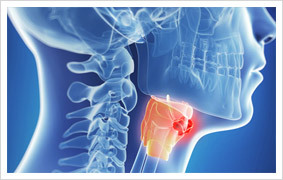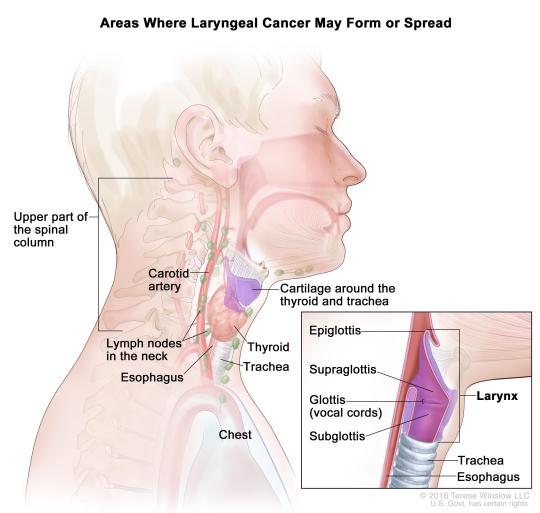#throatcancertreatable
Text
youtube
ಈ ಔಷಧದ ಕ್ಷಿಪ್ರ ಪರಿಣಾಮಗಳು 💡 | Survival Story of Throat Cancer Patient | Punarjan Ayurveda Kannada
Embark on a poignant journey with our latest YouTube video, showcasing the courageous Survival Story of a Throat Cancer Patient.
Address:-
Punarjan Ayurveda Hospital in Hyderabad
Plot No 20, 21, Nehrus Busiplex Allwyn Cross Road Signals,
Miyapur, Hyderabad, Telangana 500049
Contact: 80088 42222
#SurvivalStoryofThroatCancerPatient#ThroatCancer#ThroatCancerSurvivor#ThroatCancerSymptoms#ThroatCancerTreatment#Ayur4Cancer#PunarjanAyurvedaKannada#Youtube
0 notes
Text
#ThroatCancer#CancerSurgery#OncologistIndia#HeadandNeckCancer#ThroatCancerTreatment#CancerDoctor#CancerSpecialist#IndiaHealthcare#CancerCare#CancerExpert#CancerTreatmentIndia#ThroatCancerAwareness#CancerResearch#CancerSupport#OncologySurgeon#ThroatCancerSurvivor#MedicalTourismIndia#CancerPatients#SurgeryInIndia#CancerRecovery
0 notes
Text
The throat (Larynx) cancer, you need to know about

The throat (larynx) cancer what is cancer?
The throat (Larynx), throat is located just below. The larynx is made of cartilage and contains the vocal cords vibrating to produce sound when you speak.
The larynx is called laryngeal cancer or of developing cancer in this area.

The throat (larynx) cancer what are the symptoms?
Signs and symptoms of throat cancer may include the following:
Cough
I couldn't speak clearly like hoarseness or voice changes
Swallowing
Ear pain
Bump or a bruise that does not heal
Throat pain
Weight loss
When should you see a doctor?
If you notice any new signs and symptoms, the persistent, make an appointment with your doctor. Most of the symptoms of cancer of the larynx cancer-specific because it is not possible to research other, more common, causes of your doctor first.
The throat (larynx) cancer what are the causes?
Cancer of the larynx, throat occurs when your cells develop genetic mutations. These mutations uncontrolled growth of the cells and leads to healthy cells continue to live normally after the death of. The accumulated cells can create a tumor in the region of the larynx.
It is not clear what causes the mutations that cause cancer of the larynx. However, your doctor will identify factors that may increase your risk.
The throat (larynx) what are the types of cancer?
The larynx, the larynx is connected with a sound box that is located just below near.
Hypopharynx cancer (cancer laringofaringeal),at the bottom of your throat, the esophagus and the trachea, which is at the top right of the hypopharynx (laringofarenjit) begins.
Cancer of the glottisthe vocal cords, begins.
Cancer Supraglottikear cartilage your windpipe and food start at the top that prevents the escape of cancer that affects the epiglottis, which is the piece of includes.
Subglottic cancerof the throat at the bottom, at the bottom of the vocal cords starts.
The throat (larynx) cancer what are the risk factors?
Factors that increase the risk of throat cancer include the following:
Tobacco use including smoking and chewing tobacco,
Excessive alcohol use,
Human papilloma virus (HPV), also known as a sexually transmitted virus
Fruits and vegetables are not included in the diet
Gastroesophageal reflux disease (Gerd)
The throat (larynx) cancer, against which precautions can be taken?
There is a proven way to prevent the formation of throat cancer. However, to reduce your risk of cancer of the larynx:
You don't quit smoking or start smoking. If you smoke, you should stop. If you do not smoke, don't start. Quitting smoking can be difficult, for this reason, get help. Your doctor, medications, nicotine replacement products, such a strategy and consulting as many can tell you about the benefits and risks of smoking cessation.
For alcohol in moderation, if at all. If you choose to consume alcohol, so don't overdo it. This, in terms of healthy adults, over the age of 65 all men and one drink per day for women of all ages more than two drinks per day for men and 65 years of age and younger.
Choose a healthy diet with lots of fruits and vegetables.The vitamins and antioxidants in fruits and vegetables can reduce your risk of cancer of the larynx. Various colorful fruits and vegetables to eat.
Protect yourself from HPV.Some throat cancer, which is a sexually transmitted infection human papilloma virus (HPV) that is caused by it is believed. Limiting your number of sexual partners and using condoms you can reduce your risk of HPV. In addition, male children, female children and young women consider the HPV vaccine which is available for men and.
The throat (larynx) cancer is diagnosed how?
To diagnose throat cancer, your doctor may recommend the following:
For a closer look at your ears using a Fluoroscopic equipment.An Endoscopy your doctor for a closer look at your ears, during a process called fluoroscopy device, a special light (endoscope) may be of use. A small camera at the tip of the endoscope, the images are watched for signs of abnormality in your lungs, your doctor transfers to the video screen.
Other types of Fluoroscopic equipment (a laryngoscope) through your throat also can be placed. Your Doctor uses a magnifying lens to assist with analysis of your vocal cords. This process “preemptive” is called.
A tissue sample for examination is to be taken.If abnormalities are identified during an Endoscopy or laryngoscopy, your doctor a tissue sample (biopsy) of the inside of the device in order to take surgical instruments and fluoroscopy can spend. This sample is sent to the lab for testing. Your doctor might also be using a technique called fine needle aspiration, swollen lymph nodes, you may want to be taken a sample from.
Imaging tests.X-ray, computed tomography (CT), magnetic resonance imaging (MRI) and Positron Emission Tomography (PET) imaging tests that includes your doctor can help determine the extent of your cancer beyond the surface or your throat throat.
The throat (larynx) cancer spread (stage) is determined how?
Throat cancer has been diagnosed the next step after the cancer has spread (how much of the universe is the determination of. Knowing the stage helps determine your treatment options of the disease.
Expressed in Roman numerals from I to IV stages of cancer. There are specific criteria for each stage of throat cancer subtypes each. In general, stage I cancer of the larynx, throat, refers to a region limited to a smaller tumor. The next stage, stage IV being the most advanced stage, indicates a more aggressive cancer.
The throat (larynx) cancer treatment what are the options?
Your treatment options, The location and stage of cancer of the larynx, the cell type in which it is included, is based on many factors, including your general health and your personal preferences. Talk to your doctor the benefits and risks of each of your options. Together you can determine which treatment would be appropriate for you.
Radiation therapy
Radiation therapy radiation to the cancer cells by giving them to pave the way for X-rays and protons obtained from sources such as high-energy rays uses.
Radiation therapy can be applied with a large machine outside the body (external beam radiation) or radiation therapy cancer into your body (brachytherapy) may be provided with small wires and can be placed near radioactive substances.
The only treatment for early stage laryngeal cancer radiation therapy may be necessary. In the case of a more advanced stage laryngeal cancer, radiation therapy, chemotherapy or surgery can be combined with. At a very advanced stage larynx cancer, radiation therapy can be used to relieve and alleviate the signs and symptoms you more.
Surgery
Types of surgical operations that you can consider for your cancer treatment throat cancer depends on the location and stage. The available options within the following takes place:
Surgery for early stage laryngeal cancer.The surface of the vocal cords or the larynx, which is limited to cancer of the larynx, can be treated with endoscopic surgery. A hollow endoscope or surgical instruments to your ears and then your doctor can place a special laser that promotes from within. Using these surgical instruments, your doctor may be very superficial cancers or scrape or cut in the case of cancer the use of laser can vaporize.
Surgery where a portion or all of the larynx is removed.For smaller tumors, your doctor remove the affected section of the throat portion of throat cancer and leaves behind the maximum possible. Your doctor normal speech, swallowing and breathing can protect your ability.
Tumors spread to a wider area bigger and all may need to be taken for the throat. You then breathe in your lungs windpipe to a hole (stoma) that connects to (tracheostomy). All maranki is taken, you have several options to enable you to talk again. You can work with a speech pathologist to learn how to speak without a throat.
A portion of the neck of the receipt of surgery (laryngectomy).Smaller cancer of the larynx, your throat during surgery may require removal of only small sections. The piece was removed to allow the food to swallow in the normal way can be rebuilt.
Surgery where the cancerous lymph nodes are removed (neck dissection).The deep parts of your neck throat cancer if it spreads to your doctor to see if it contains cancer cells, the lymph nodes may suggest surgery to remove some or all of.
Surgery carries the risk of bleeding and infection. Other possible complications such as difficulty swallowing or speech, you were taken to surgery will depend on you.
Chemotherapy
Chemotherapy, the use of drugs to kill cancer cells. Chemotherapy often is used in conjunction with radiation therapy in the treatment of cancer of the larynx. Makes cancer cells more sensitive to radiotherapy and certain chemotherapy drugs. However, the merging of both treatments enhances the side effects of chemotherapy and radiation therapy. The effects of combined treatments that are likely to experience enough benefits to outweigh the side effects and if we can have talk to your doctor.
Targeted drug therapy
Flaws by taking advantage of specific targeted drugs that stimulates the growth of cancer cells, treat cancer of the larynx.
Cetuximab (Erbitux), in certain cases, approved to treat cancer of the larynx is a goal-oriented treatment. Cetuximab, although there are many healthy cells, cancer cells of the larynx is more common in which a protein stops the effects of certain types of.
Other targeted drugs are being investigated in clinical trials. In conjunction with targeted chemotherapy drugs or radiation therapy may be used.
Post-treatment rehabilitation
The treatment is usually cancer of the larynx in swallowing solid foods that require to work with experts in order to regain the ability to speak eat and it can cause complications. During and after throat cancer treatment, your doctor may require you to seek help on the following issues:
Difficulties in eating
Swallowing difficulties
Stiffness and pain in your neck
Speech problems
Your treatment your doctor will discuss potential side effects and complications.
https://www.orak11.com/index.php/what-is-skin-cancer/
Warning !
It is a proposal and Information article that has been compiled from different sources. There is no definitive diagnosis and treatment. Ask your doctor about any health problems. Remember, the treatment methods applied in health problems may vary according to the biology of individuals, hereditary characteristics, age, height, weight differences, allergic aspects and dozens of such conditions. Only your doctor can help you in the treatment of your health problems.
Read the full article
#canceroflarynxsymptoms#larynxcancer#larynxcancericd10#larynxcancersymptoms#Thethroat(larynx)cancerwhatiscancer?#throatcancer#throatcancercauses#throatcancercure#throatcancerfromhpv#throatcancerhpv#throatcancerlump#throatcancerpictures#throatcancersurvivalrate#throatcancersymptoms#throatcancersymptomsinwomen#throatcancertreatable#throatcancertreatment#throatcancertypes
0 notes
Text
ಈ ಔಷಧದ ಕ್ಷಿಪ್ರ ಪರಿಣಾಮಗಳು 💡 | Survival Story of Throat Cancer Patient | Punarjan Ayurveda Kannada
Embark on a poignant journey with our latest YouTube video, showcasing the courageous Survival Story of a Throat Cancer Patient.
Address:-
Punarjan Ayurveda Hospital in Hyderabad
Plot No 20, 21, Nehrus Busiplex Allwyn Cross Road Signals,
Miyapur, Hyderabad, Telangana 500049
Contact: 80088 42222
#SurvivalStoryofThroatCancerPatient#ThroatCancer#ThroatCancerSurvivor#ThroatCancerSymptoms#ThroatCancerTreatment#Ayur4Cancer#PunarjanAyurvedaKannada
0 notes
Text
#ThroatCancer#CancerSurgeon#OncologyIndia#CancerTreatment#CancerSurgery#ThroatCancerTreatment#IndiaHealthcare#CancerCare#CancerSpecialist#CancerExpert#HeadandNeckCancer#ThroatCancerAwareness#CancerResearch#OncologistIndia#CancerSupport#MedicalTourismIndia#CancerPatients#SurgeryInIndia#CancerRecovery#CancerTreatmentOptions
0 notes